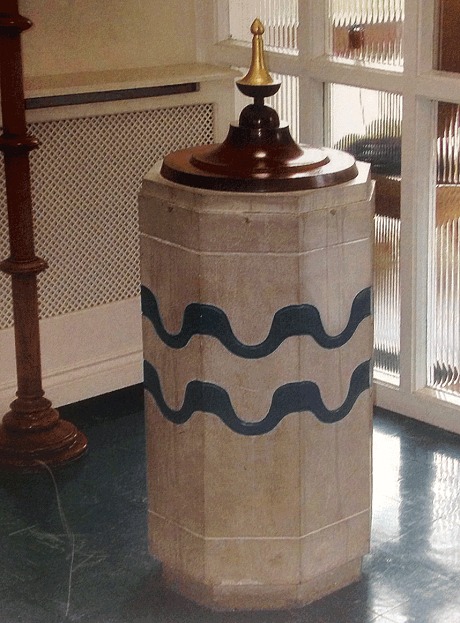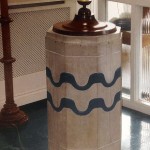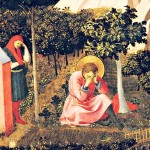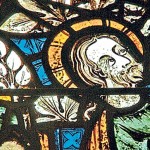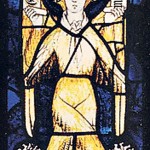The Essex Man Who Knew What a Church was once For
the internal of St Mary-le-Bow presentations off the work of an architect who lived lengthy after Wren

there is a surprise within the church of St Mary-le-Bow (inside the sound of whose bells Cockneys have been as soon as born). outside, you see Wren’s advantageous steeple above Cheapside in the city of London. inside of, you see, not Wren’s work, destroyed by means of bombing in 1941, but the “Laurence King therapy”, as the Church occasions as soon as referred to as it.
The nave is mild, the roof picked out in white and gold between panels of blue. The altar, in opposition to the large East wall (with up to date stained glass), is the point of interest. Above the sanctuary hangs from the roof a crucifix, and extra – an expressive crew with Mary and John, and Mary Magdalen kneeling, and the centurion gesturing, all painted and gilt.
This putting rood used to be carved by Otto Irsara of faith Craft, the church furnishing company that between 1916 and about 1970 reflected the ideas of its sponsors, the Society of the religion, which emphasised the Catholic aspect of the Church of England.
Laurence King (1907-eighty one) was its most entire architect – not widely recognized taking into account his many commissions. He didn’t worry to revive the internal of the seventh-century church of St Peter at Bradwell-on-Sea, Essex. It had for centuries been used as a barn, and though the fee stipulated it will have to not be made a victim of “restoration”, King insisted it must at the least be paved, due to the fact that used to be how the Saxons would have identified it – and few these days would kneel on the earth.
King “knew what a church used to be for”, a high quality picked out by using James Bettley the historian in a captivating essay about him for a brand new e-book called All manner of Workmanship, on the work of faith Craft, illustrated with excellent colour footage.
any individual else who knew what a church was for used to be the architect Ninian Comper (who used Watts and Co for his furnishings). For him a church used to be a building to accommodate an altar. in a similar fashion, King made his work reflect the foundations of the so-called Liturgical movement, which bought up steam in Germany between the wars.
one among King’s sayings was that it was once “traditional to be brand new”. This, i feel, takes him past Comper’s hospitable notion of unity by way of inclusion, by which Baroque may fortunately complement Gothic. however simply as King geared up up a crucifix with the aid of Francis Stephens at Bradwell (invoking in modern painted timber the Anglo-Saxon crucifixes at Romsey Abbey), so in the eleventh-century crypt at St Mary-le-Bow (which survived both the fire of London and the bombing of 1941) he fitted a Byzantine-model crucifix behind a brand new freestanding altar.
 Laurence King’s St James, Marden Ash, rebuilt 1957 picture: James Bettley
Laurence King’s St James, Marden Ash, rebuilt 1957 picture: James Bettley
King was once no longer all the time florid and Baroque. At Ongar, Essex, he constructed a new church after St James, Marden Ash, was destroyed through a V2 rocket. Its exterior is plain, with walls of inventory bricks and 5 spherical-headed windows on every aspect of the nave, with a pantile roof, a slim bell-tower at the west end and an apse for the for the altar on the east end.
 Laurence King’s font at the church the Ascension, Chelmsford photo: James Bettley
Laurence King’s font at the church the Ascension, Chelmsford photo: James Bettley
in the much less traditional church of the Ascension, Chelmsford (1961), he designed a lovely octagonal stone font with a double wavy band of blue (for water). It has a wooden cover surmounted with a gilt finial, a little bit paying homage to ornament within the days of the early seventeenth-century Caroline divines.
King was once an Essex man, and James Bettley rightly calls “inadequate” an previous judgment in the Pevsner volume for Essex that King “every now and then surprises” regardless of “a bland style”.
he’s commemorated at the church of St Thomas, Brentwood, in a high quality window by using John Hayward, his long associate and co-worker for religion Craft.
the interior of St Mary-le-Bow shows off the work of an architect who lived lengthy after Wren
Telegraph Columnists: day-to-day opinion, editorials and columns from our star writers
(46)

